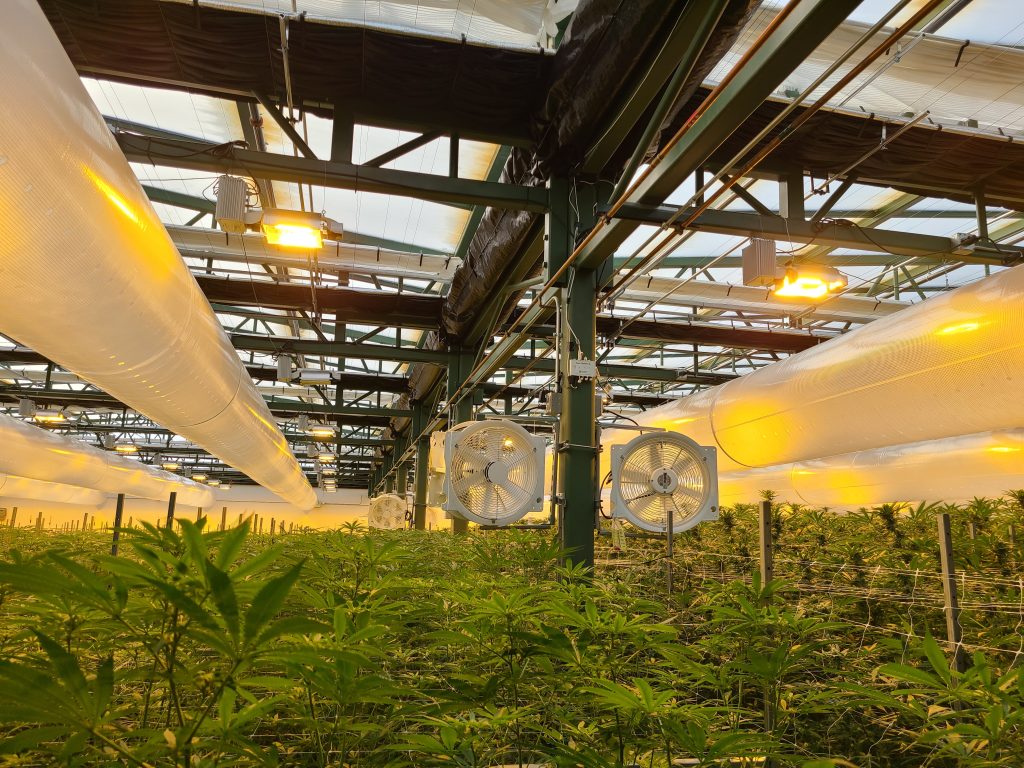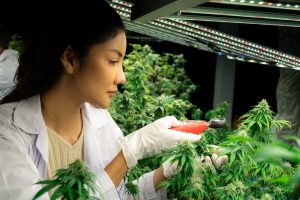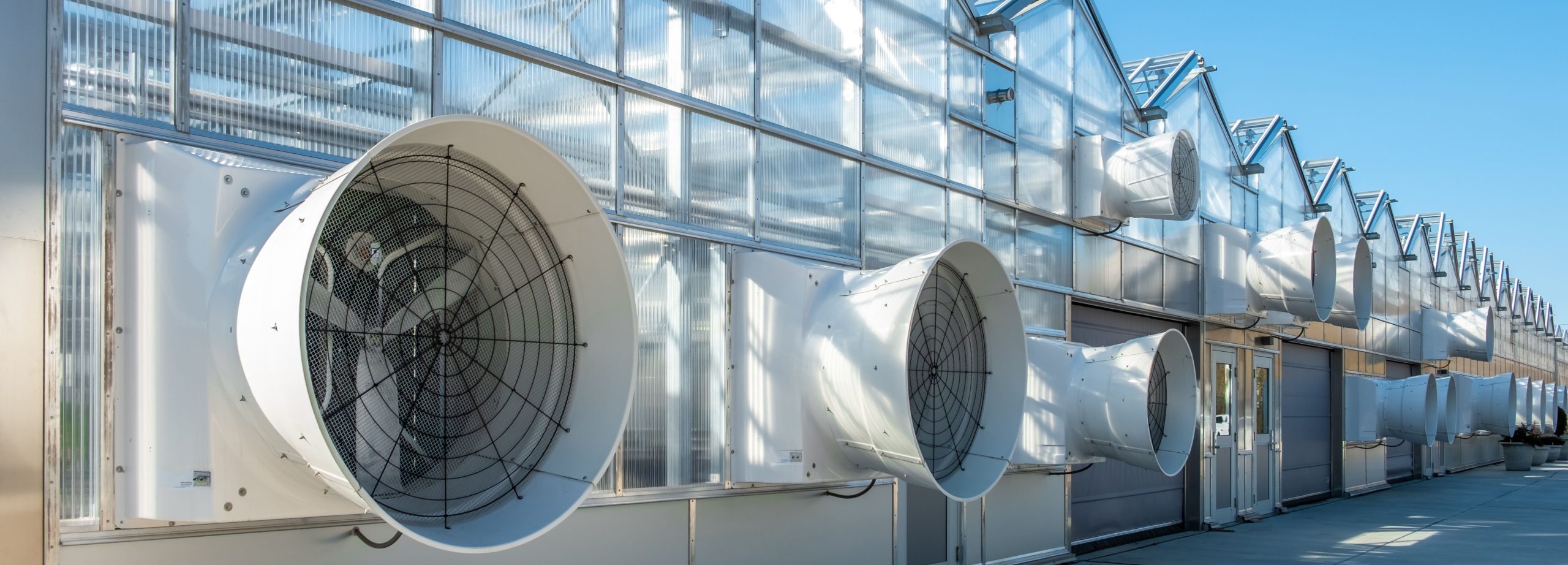Vapor Pressure Deficit (VPD) plays a crucial role in cannabis cultivation. VPD is the difference between moisture that is currently in the air and how much moisture the air can hold at saturation, or dew point. Never underestimate the importance of VPD in plant growth. VPD is a driving force in transpiration which directly impacts the health and quality of your crop. A VPD chart can help direct you on the interaction between relative humidity and temperature so you can provide the ideal environment for your plants to flourish.
VPD and Transpiration
Transpiration is the term used to refer to the movement of water and essential nutrients through the plant’s many cells. Plants rely on transpiration to regulate temperature and successfully pull carbon dioxide from the air.
VPD is crucial in transpiration and enables the roots to uptake nutrients and spread to the plant’s upper regions. The movement of water in a plant occurs as the plant releases water vapor through its stomata (a process like sweating). Please reference the VPD chart for more detailed information.
Problems with VPD
- Small VPD – When VPD is small then the plant simply cannot attain its peak growth potential. Problems also start to occur such as root rot and mold.
- Large VPD – When VPD Is too large the stomata on the plant will close to lower transpiration which leads to leaf curl and tip burn.
Calculating VPD
Growers can calculate VPD from the plant and grow room’s temperature and relative humidity (RH). Within the grow room the plant’s surface temperature and the dry bulb temperature run cooler. The plant is forming water, so the plant’s surface is 100% RH when transpiration is occurring.
Ideal VPD for cannabis:
- VPD range 0.8–1.1 (kPa) for the vegetative stage.
- VPD range 1.0–1.5 (kPa) for the flowering stage.
Maintaining a consistent temperature and relative humidity leads to a consistent vapor pressure deficit which fosters plant transpiration and optimizes plant growth.
Consistent temperature coupled with relative humidity → consistent pressure deficit → fosters healthy plant transpiration → ensures healthy plant growth.
A VPD chart serves as a useful tool when making calculations.
Please click here for a VPD chart to use for reference.
VPD at Different Stages of Cannabis Cultivation
VPD must be adjusted at every stage of a cannabis plant’s life stage.
Propagation
When cultivating cannabis clones, you’ll need to remember that the cutting cannot effectively uptake water. The goal is to let the cutting slowly start to grow roots and repair itself. During the process, you’ll want to keep the relative humidity high, 75% – 90%, to ensure that the cutting does not lose water. A low VPD and high relative humidity must be maintained. As the repairs start, the relative humidity can move down.
Vegetative Stage
During the vegetative stage, you will want to have a low VPD and a high relative humidity rate to encourage healthy, busy growth. The temperature is warmer than when growing seedlings or cuttings because a hot temperature encourages greater cell expansion. The higher relative humidity promotes leaf expansion to create healthy, broad leaves.
Flowering Stage
During the night you’ll want the temperature to lower and then rise during the daytime so that the cannabis plant believes winter is coming. The plant will start to develop flowers. Lower the relative humidity and increase the VPD in preparation for harvest.
When cultivating cannabis, VPD is every bit as important as lighting. The changing VPD and lighting are what encourage the plant to enter its different life stages.
Maintaining a Healthy VPD
To maintain a healthy VPD and ensure healthy transpiration rates throughout every stage of growth you’ll need to control the environmental conditions in the grow room or greenhouse.
The environmental systems that you invest in will help ensure that the temperature and humidity setpoints are on target so you can maintain VPD goals. Everything plays a role in the process such as the number of lights, watering system, run-off rates, HVAC configuration, and more.
To meet the intricate balance needed to maintain the health of your plants you may also consider cannabis fogging. Cannabis fogging can provide you with the solution you need to create a completely balanced microclimate to ensure success.
Within indoor commercial spaces, greenhouses, and grow rooms, a cannabis fogging system assists with the balance of temperature and humidity and directly contributes to managing VPD.
All About Koolfog Cannabis Fogging
 A Koolfog system operates at pressures of 1000 psi or more to create micron-sized water droplets that evaporate and turn to vapor. This allows the introduction of precise levels of humidity into an environment.
A Koolfog system operates at pressures of 1000 psi or more to create micron-sized water droplets that evaporate and turn to vapor. This allows the introduction of precise levels of humidity into an environment.
Our fogging system can be designed to operate in single-room cannabis growing facilities, shade houses, or screen houses. It can also be designed to work in large commercial-scale greenhouses with multiple zones with multiple VPD set points.
Integrating to grow system controls allows the fog system to fully automate delivery at constant pressure levels of fog or use pulsed output. You also have the option of variable pressure control and staging so you can gain complete control of the greenhouse or indoor cultivation facility’s microclimate.
If you would like to learn more about Koolfog and how the system can truly take your cannabis cultivation to the next level, then we encourage you to contact us today.





